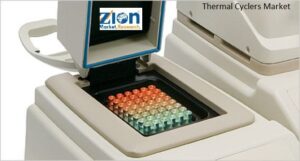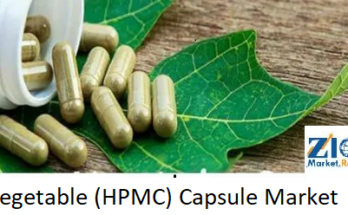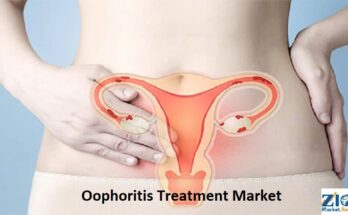The thermal cyclers market is experiencing significant growth, with its global size reaching a noteworthy value of approximately USD 781.49 million in 2022. Experts predict that this market will continue to expand and is expected to reach a substantial worth of around USD 1369.37 million by the year 2030. This growth trajectory is attributed to a promising compound annual growth rate (CAGR) of approximately 7.32% anticipated between the years 2023 and 2030.
What are Thermal Cyclers?
Thermal cyclers are vital laboratory tools used in molecular biology and genetics. They are also known as PCR (Polymerase Chain Reaction) machines or DNA amplifiers. The major purpose of these enzymes is to amplify particular sections of DNA through a process known as the polymerase chain reaction.
The polymerase chain reaction (PCR) is a sophisticated technology that can reproduce and rapidly amplify a particular DNA sequence. Researchers are able to manufacture millions or even billions of copies of a specific DNA segment from a modest starting sample thanks to this technique. After the DNA has been amplified, it can be analysed for a wide variety of reasons, including diagnostics, genetic testing, investigation of gene expression, and DNA sequencing.
The DNA sample is put through a number of temperature cycles in order for the thermal cycler to do its job, which entails the following three primary steps:
- Denaturation: The process of denaturation occurs when the temperature is elevated to between 94 and 98 degrees Celsius. This causes the DNA strands to unwind, or denature, into two individual strands.
- Annealing: During annealing, the temperature is reduced to somewhere between 50 and 65 degrees Celsius. This makes it possible for short DNA primers, which are short stretches of single-stranded DNA, to bind specifically to the complementary areas on the split DNA strands.
- Extension/Elongation: During the extension or elongation step, the temperature is raised to about 72 degrees Celsius, and a DNA polymerase enzyme is used to synthesize new DNA strands by adding nucleotides to the ends of the primers. This process extends the DNA sequence.
Thermal Cyclers Market Growth Factors
Because the quantity of DNA is increased by a factor of two with each cycle, the end effect is an exponential growth in the number of DNA copies. The number of cycles normally ranges from 20 to 40.
Thermal cyclers are built with the ability to accurately control the temperature, which ensures that the phases of denaturation, annealing, and extension take place at the appropriate temperatures and for the allotted amounts of time. Thermal cyclers of the modern era typically come pre-fitted with a variety of cutting-edge features, including numerous sample blocks, gradient functionality (which helps to optimise reaction conditions), and real-time monitoring capabilities for the purpose of quantifying and analysing the amplification process as it takes place.
In the field of genetics research, as well as in forensics, molecular diagnostics, and a wide variety of other biological applications where DNA amplification is required, thermal cyclers are tools that are absolutely necessary. Their effectiveness and precision have revolutionised a variety of sectors, allowing researchers to solve the riddles of genetics and carry out ground-breaking research using DNA.
Because of recent rapid breakthroughs in the field of molecular biology, which have led to an increased need for thermal cyclers, the global market for thermal cyclers is expected to expand in the coming years. Important research fields such as biomedical research, diagnostics, agriculture, and forensic sciences frequently use methodologies such as polymerase chain reaction (PCR), DNA sequencing, and genetic testing, which has led in an increased demand for thermal cyclers that are both efficient and trustworthy. The rising interest in personalised medicine, which entails tailoring medical treatments to an individual based on their genetic make-up, is another factor that is essential to the expansion of the thermal cyclers business.
As the medical community works towards its goal of shifting the emphasis from therapy based on reactions to treatment based on prevention, there is a growing desire for personalised medicine as a means of overcoming the limitations imposed by traditional medicine. The number of personalised medications that were made available on the commercial market increased by 4.1% between 2016 and 2022, and approximately 25% of the therapies that were approved by the United States Food and Drug Administration (FDA) in 2019 were personalised. Other factors, such as the rising incidence of infectious diseases and the expanding scope of research and development activities pertaining to thermal cyclers, are also likely to contribute to the expansion of the market.
It is anticipated that the global market for thermal cyclers would face significant growth limits as a result of the increasing competition from various alternative technologies such as. In addition, one of the primary worries of market participants is the potential for problems to develop as a result of infringements on intellectual property (IP) rights. In the event that their intellectual property is infringed upon, the original suppliers stand to suffer significant financial losses as a result of the high costs associated with the development and production of thermal cycler technology.
The prospect of thermal cyclers becoming obsolete is a barrier to business expansion, but opportunities for their use in technologies other than PCR could result in increased revenue streams.
Gradient and real-time segment of the global market.
End-users of the global market include academic & research foundations, pharmaceutical companies, diagnostic laboratories, and others. Pharmaceutical companies used thermal cyclers primarily in 2022 due to the COVID-19 pandemic. These firms create new vaccines, medicines, and diagnostics using thermal cyclers. Target validation, medication target identification, genetic testing, pharmaceutical quality control, and clinical trials use them. The Centre for Drug Evaluation and Research authorised 37 unique NDAs or BLAs in 2022.
Genotyping, diagnostics, manufacturing & quality control testing, mutagenesis, cloning, forensics, clinical research, and others comprise the global market by application. Thermal cyclers, used for molecular diagnostics, grew the most in 2022. Thermal cyclers detect genetic markers, infections, and disease-related mutations, revolutionising medicine. Thermal cyclers identify bacteria, viruses, and parasites. They are also essential to genetic testing for inherited illnesses, predispositions, and personalised medication. Pfizer, a pharmaceutical giant, boosted research investment to USD 13.4 billion.
The US leads the global thermal cyclers market due to its robust healthcare infrastructure, high medical tourism, and increased investments in personalised medicine. Financial recompense for the domestic population improves quality of life.
Research and academic institutions in Germany, the UK, France, and Switzerland are expected to drive revenue in Europe. Regional expansion benefits from well-regulated healthcare and enhanced gene-based research. Germany spends 55 billion euros on research.
Read Also Other Report –
https://www.zionmarketresearch.com/report/fertility-testing-devices-market
https://www.zionmarketresearch.com/report/addison-disease-testing-market
https://www.zionmarketresearch.com/report/data-centric-security-market



